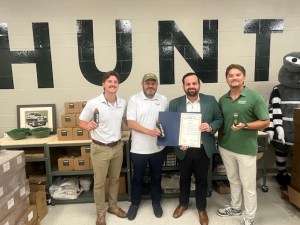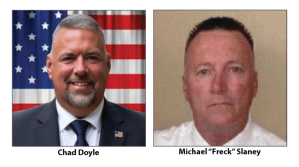Jim Beam column:How is Christianity doing?
Published 6:32 am Saturday, April 5, 2025

- The Pew Research Center has found that 62% of Americans say they are Christians.(Image courtesy of Bible.com)
Attending church services for a lifetime has served me well, and I am continuing to learn more about the Bible as a Sunday school teacher. However, I sometimes wonder whether there is a general decline of Christianity in this country.
A February report about an extensive survey done by the Pew Research Center has offered some encouraging news. Its survey of 36,908 U.S. adults said after many years of steady decline, the share of Americans who identify as Christians shows signs of leveling off, at least temporarily.
The bottom line is that six in 10 Americans identify as Christians. The first survey the center did in 2007 found that 78% of U.S. adults identified as Christians of one sort or another. The second survey conducted in 2014 found 71% identified as Christians. The latest survey done over seven months in 2023-24 found that 62% of U.S. adults identify as Christians.
Trending
The Religious Landscape Study (RLS) is the largest single survey the center conducts. Its goal is to provide authoritative figures on the size of religious groups because the U.S. Census doesn’t collect that information.
The center said the three landscape surveys it has done over the past 17 years, with more than 35,000 randomly sampled respondents each time, is enough to paint a statistical portrait of religion not only nationally, but also in all 50 states and the District of Columbia, as well as in 34 large metro areas.
For the last five years, between 2019 and 2024, the Christian share of the adult population has been relatively stable, hovering between 60% and 64%.
The largest subgroups of Christians in the United States are Protestants — now 40% of U.S. adults — and Catholics, now 19% of U.S. adults. People who identify with all other Christian groups (including the Greek and Russian Orthodox Churches, the Church of Jesus Christ of Latter-day Saints, Jehovah’s Witnesses and many others) total about 3% of U.S. adults.
The center said the share of Americans who identify with a religion other than Christianity has been trending upward, though it is still in single digits.
Today, 1.7% of U.S. adults say they are Jewish when asked about their religion, while 1.2% of respondents in the new survey are Muslim, 1.1% are Buddhist, and 0.9% are Hindu.
Trending
Religiously unaffiliated adults — those who identify as atheists, agnostics or as “nothing in particular” when asked about their religion — account for 29% of the population. The size of the religiously unaffiliated population, which are sometimes called “nones,” has plateaued in recent years after a long period of sustained growth.
Though down significantly since 2007, the share of Americans who say they pray daily has consistently held between 44% and 46% since 2021. In the latest survey, 44% say they pray at least once a day.
Since 2020, the percentage of U.S. adults who say they attend religious services monthly has hovered in the low 30s. In the new survey, 33% say they go to religious services at least once a month.
The latest survey showed women remain more religious than men in the United States. The share of self-described political liberals who identify as Christians has fallen 25 points since 2007, from 62% to 37%. Among self-described conservatives, the Christian share has declined 7 points, from 89% to 82%.
All three major strands of Protestantism have declined in percentage terms since 2007. Evangelical Protestants now make up 23% of U.S. adults, down from 26%. Mainline Protestants account for 11% of U.S. adults, down from 18%. Members of historically Black Protestant churches make up 5% of U.S. adults, down from 7%.
Some disturbing signs: Young adults are far less religious than older adults. Compared with older people, fewer young adults who had a highly religious upbringing are still highly religious as adults.
Perhaps the best news from the survey shows that large majorities of Americans have a spiritual or supernatural outlook on the world.
- 86% believe people have a soul or spirit in addition to their physical body.
- 83% believe in God or a universal spirit.
- 79% believe there is something spiritual beyond the natural world, even if they can’t see it.
- 70% believe in an afterlife (heaven, hell or both).
Church services are a great way to start each week. If you haven’t tried it lately, maybe it’s time to get back.
Jim Beam, the retired editor of the American Press, has covered people and politics for more than six decades. Contact him at 337-515-8871 or jim.beam.press@gmail.com.
| ReplyForward
Add reaction |






